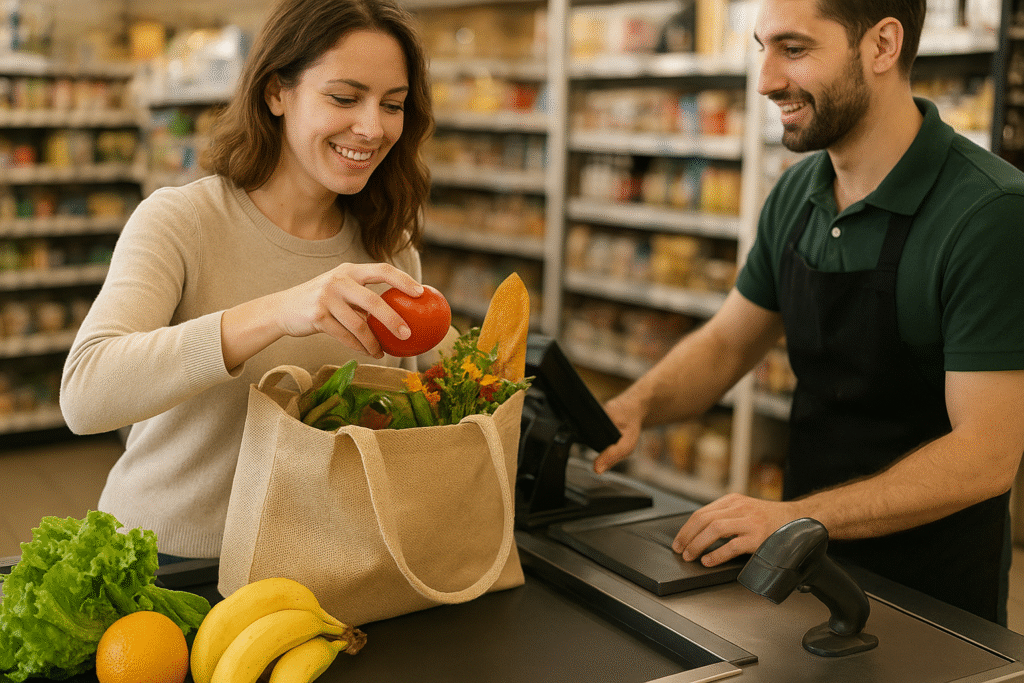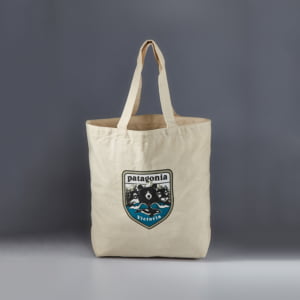By the crew at Bombay Bags
We have been around jute for years. It smells like dirt when it’s new, it gets a little softer after a few weeks of use, and it keeps its shape even after going to the store a hundred times. Jute is more than just a fabric to us. It’s a little, honest protest against the plastic mess we grew up with.
And if you own a grocery store or are thinking about what your customers take home every day, it might be worth taking a time to think about what jute truly means for the earth and for your business.
The Move Toward Eco-Friendly Retail: Why Jute Is the New Plastic
We all know what happened: single-use plastics had their time. That time has passed.
More and more towns, provinces, and even whole countries are getting rid of them. But the true change isn’t only the laws; it’s individuals. Your clients want greater choices. They don’t want to carry around cheap, fragile bags that make them feel bad.
Jute is not the same. It has a certain honesty about it. It doesn’t try to be something it’s not; it’s strong and natural. People can feel the difference when they pick up a jute bag. It feels real, anchoring, and almost like a memory.
We’ve seen it happen in both tiny stores in the area and big supermarket stores. Customers notice when stores switch to jute. And they chat about it.
The Business Case: How Jute Bags Make Customers Loyal and Brands Live
It’s quietly empowering to see a consumer wandering around town with your store’s jute bag on their shoulder. Yes, it’s free promotion, but it’s also pride.
People want to use a jute bag again. The farmer’s market run, the trip to the library, and the shopping for the weekend all become part of their daily routine. Your brand goes with them every time they utilize it. Not like a logo, but like something we all believe in.
One business owner told us, “When we started selling jute bags, our regulars started asking for extras not because they needed them, but because they wanted to give them as gifts.”
That’s the kind of link that no ad campaign can purchase.
The Money: How Much Jute Bags Really Cost
Let’s be honest about money.
A jute bag does cost more up front than a plastic or paper bag. But here’s the truth we’ve seen time and over: it pays for itself.
Tears in paper. People throw away plastic. But a bag made of jute? It goes on. People use it dozens, if not hundreds, of times. That means fewer times you’ll have to order things again, less waste, and more money saved in the long run.
And if you sell them instead of giving them away, even if you only make a little bit of money, they start making money, not just goodwill. It’s not often that the environment and the economy get along so well, but jute does.
The effect on the environment: Nature’s quiet workhorse
Not many people know this, but jute is actually carbon negative. While it grows, it takes in more CO₂ than it gives off. And it grows quickly, with little water or fertilizer.
It goes back to the soil without a sound, leaving no trace. Plastic takes 400 years to break down, if it ever does.
We like to think of jute as nature’s way of keeping things in balance. It gives, it serves, and it comes back.
Local and ethical sourcing: a link between communities
We get our jute from small farms in India where people have known how to work with this golden fiber for decades. Helping them means helping whole communities, like farmers, weavers, women’s cooperatives, and artisans who still believe in taking their time and doing good work.
Riya, one of our team members, once expressed it best: “Every time we ship a batch of bags, I think of the people who touched them, from the farmer who planted the seeds to the client who opened their food. It’s a long, pretty chain. *
When grocery retailers buy jute, they’re not simply getting a bag. They are joining that group.

Design and Aesthetics: When Function Becomes Expression
To be honest, supermarket bags used to be dull. But they don’t have to be.
Jute has a rough, natural feel that goes well with basic designs, hand-drawn logos, or earthy colors. It’s like a canvas from nature. And people see it. They carry it with pride.
We’ve seen retailers turn their jute bags into works of art, like limited editions, seasonal prints, or collaborations with local artists. All of a sudden, the shopping bag isn’t just a bag; it’s a part of culture.
The Future: Jute in the Circular Economy
This is more than just baggage. It’s about how shopping fits into the new circular universe, where nothing is really tossed away and everything comes back.
That tale works well with jute. It can break down, be composted, and be used over and over again. Picture a grocery store that not only sells food in a way that doesn’t harm the environment, but also packages sustainability. That’s where the world is going.
And the best part? You can begin immediately.
One Last Thing
We don’t have a lot of employees. We are a little group, but we still get excited every time a new cargo of jute comes in. The earthy smell and golden-brown color that catches the light just perfectly are very nice. We trust this fiber. It’s not just excellent for business; it’s also good for the soul of business.
We think the bag is the best place for grocery stores to start making a change that will help the world, the people, and their own bottom line.
Because sustainability isn’t always a big change.
It’s a little, wonderful choice that individuals who care made.









